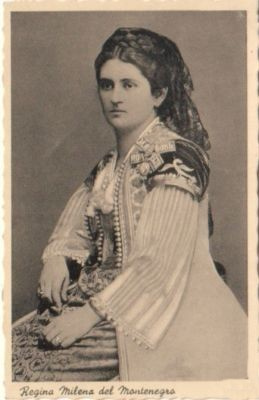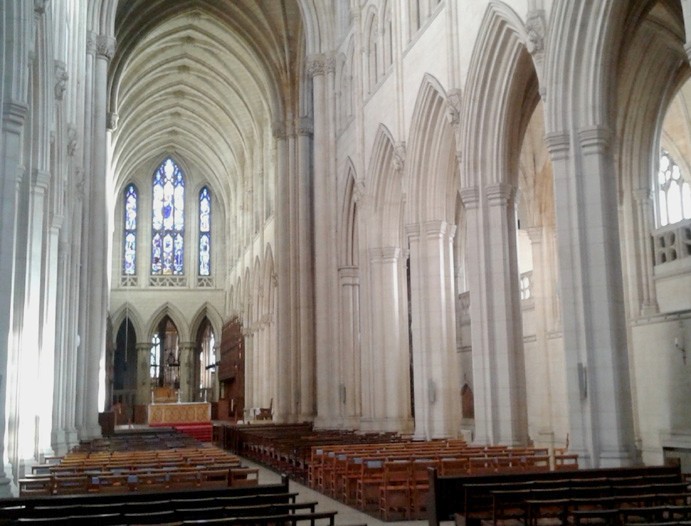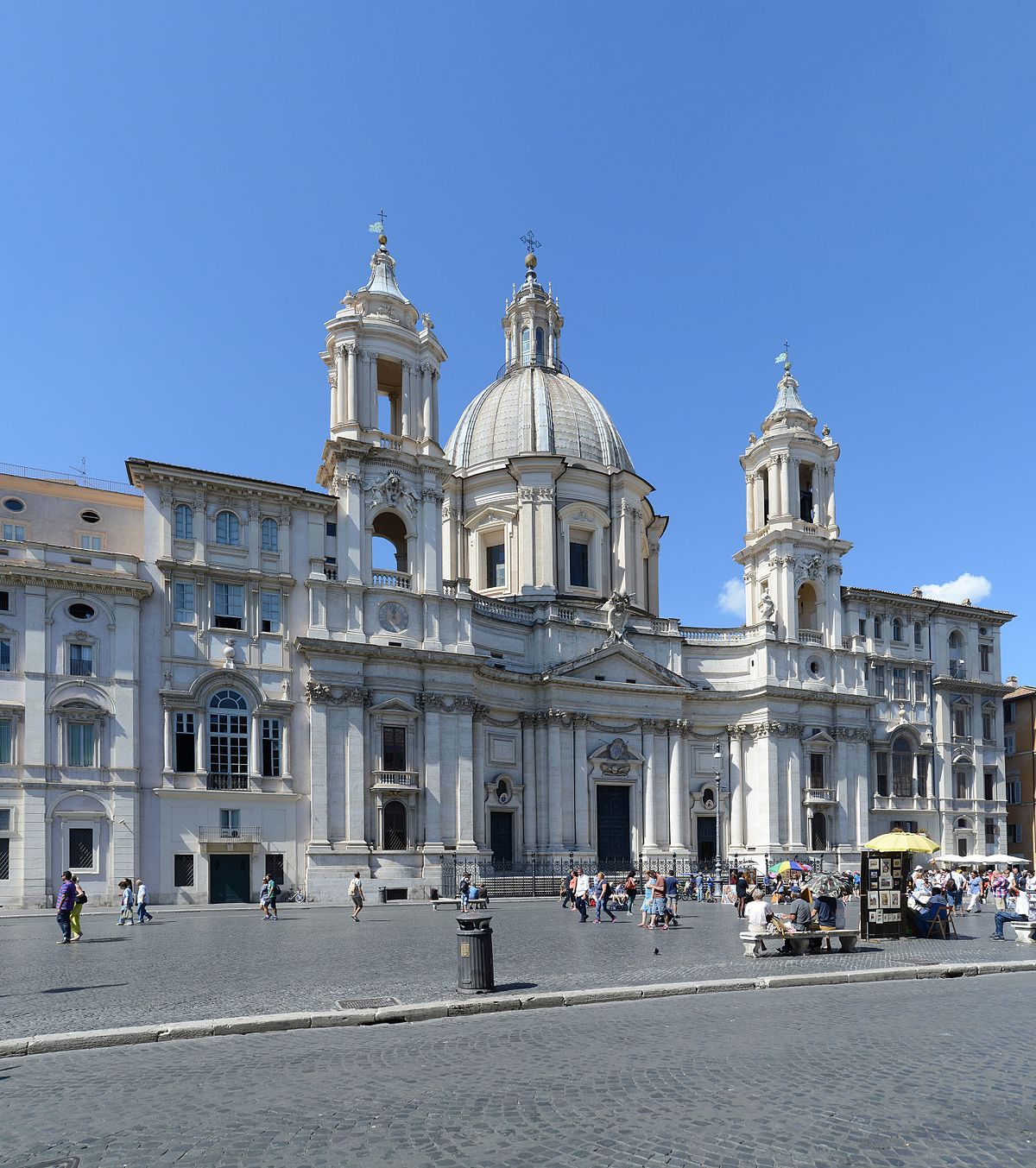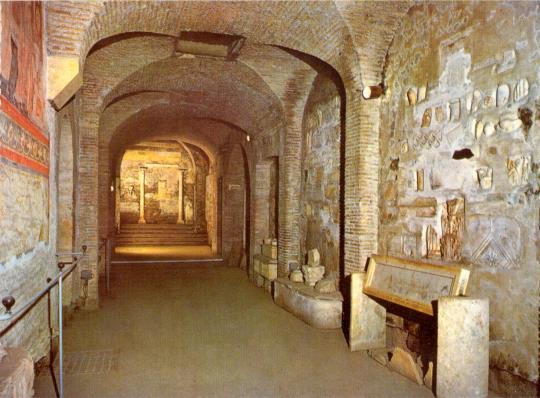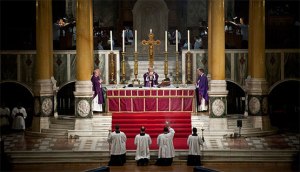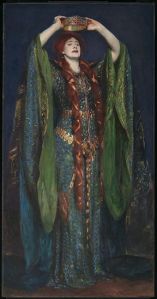The following is a book review from the Tablet in 1899. They had supported the Scrope family claim to reviving a long extinct peerage from the court case in 1859, when Simon Thomas Scrope (1790 – 1872) claimed the Earldom of Wiltes. His son, another Simon Thomas Scrope (1822 – 1896) was Fr. Philip O’Bryen’s god-father.
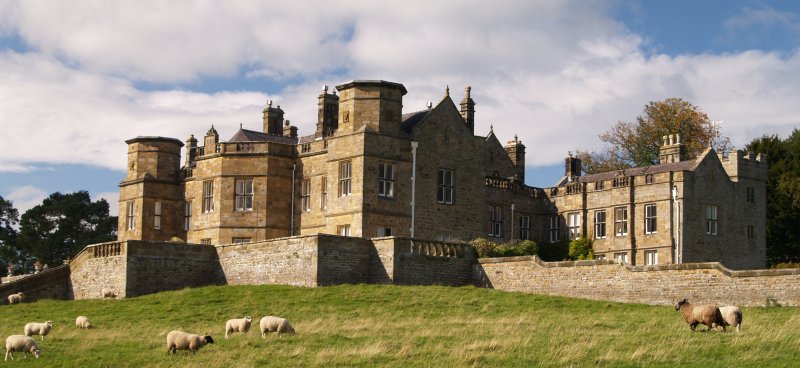
The Scropes Of Danby: A Great Historic Peerage: The Earldom of Wiltes. By John Henry Metcalfe. The Chiswick Press. 1899.
WITH an unbroken male descent from the Conquest, the present head of the House of Scrope, Mr. Scrope of Danby, can look back upon a line of ancestors who have played a varied and conspicuous part in the making of England. During the three hundred years between the reigns of Edward II. and Charles I. the Scropes were in the heyday of their power ; honours fell thick upon them, and they were always to the front in every department of the national life. During this period this single family produced “two Earls, twenty Barons, one Chancellor, four Treasurers, and two Chief Justices of England, one Archbishop and two Bishops, five Knights of the Garter, and numerous Bannerets, the highest military order in the days of chivalry.” The family was ennobled in two branches, Scrope of Bolton, and Scrope of Maskam and Utsall, and its feats of arms whenever the men of Wensleydale were led to battle are still commemorated in many a ballad and folk-song. Perhaps the most distinguished of its individual members was William Le Scrope, Lord Treasurer of England, and Guardian of the Kingdom during Richard II’s absence in Ireland. Fighting under John of Gaunt in France, he was knighted at an early age for valour in the field, and in 1388 was appointed Seneschal of Aquitaine. The next sixteen years were to tell an unbroken story of splendid service royally rewarded, until it may well have seemed that, in Shakspeare’s words, he ” held the realm in farm.” Governor of the Castle and town of Cherbourg, Constable of the Castle of Queenborough, Governor of Beaumaris Castle, and Chamberlain of Ireland, he entered upon the last decade of his life. In 1391, the Castle of Bamburgh was made his for life ; three years later he received the town of Marlborough in lieu of a fee of 200 marks which the King had granted him on “retaining him to abide with him, the King, during his whole life.” In the same year he became the Sovereign Lord of Man, having acquired the island by purchase from the second Earl of Salisbury ; the next year he was made a Knight of the Garter and Vice-Chamberlain of the Household; in 1396 he became Lord Chamberlain ; then he went as Ambassador to France to negotiate the King’s marriage and sign the treaty of peace ; in 1397 he was created Earl of Wiltes and sent as Ambassador to treat for peace with the King of Scotland. Honours continued to come even when the shadow of death already lay across his path, and in the last year of his life he was appointed to the high office of Lord Treasurer of England, Custos of the Castles of Rochester and Leeds, and, finally, Guardian of the Realm during the King’s absence in Ireland. The landing of Henry of Bolingbroke was followed by quick disaster to the King’s cause. The capture of Bristol Castle left the Earl of Wiltes a prisoner in the hands of the invaders, and without the pretence of a trial he was hurried to execution and his head sent to London to be set upon a spike for exposure on London Bridge.
The Earl left no issue, and in the troubled times that followed, during which the family estates were confiscated, no claim to the peerage seems to have been put forward, and it is quite likely that the unusual terms of the original patent soon came to be forgotten. Early in the present century the original charter was accidentally discovered. The discovery in the case of the Devon peerage of a similar charter led to a successful claim to the earldom, and probably suggested to the Scropes that they should take steps to assert what now seemed an evident right.
The charter of King Richard conferring the Earldom of Wiltes ran thus : “To have to him and his heirs male for ever (et heredibus suis masculis in perpetuum).” The usual limitation in such cases is, of course, to “the heirs of his body,” but there are six instances in which there have been grants of English Peerages with limitation to heirs-male—the Earldom of Oxford, Wiltes, and Devon, and the Baronies of Hoo and Hastings, Richmont Grey, and Egremont. The claim was laid before the House of Lords in 1859, and dragged on for ten years. Mr. Metcalfe’s account of this most interesting and important case is disappointing, and at times misleading. It quite fails to give any right idea of either the strength or the weakness of the claim, or even of the constitution of the Court which determined it. After mentioning the time occupied in hearing the case, Mr. Metcalfe says : ” During this time the greatest of the law lords who heard it, Lords Wensleydale and Cranworth, died, and Lords Westbury and Romilly took no part in it. The decision, therefore, rested with Lord Chelmsford, and a new Scotch law lord, Lord Colonsay. Virtually the decision was that of Lord Chelmsford.” As a matter of fact three Peers agreed in rejecting the claim, though on slightly different grounds, and each delivered a separate judgment. Why Lord Redesdale’s judgment should be thus ignored is not apparent. Nor does Mr. Metcalfe seem to appreciate the force of Lord Chelmsford’s objections. Thus we read :
Mr. Fleming, the Claimant’s Counsel, often said that if an instance could be found in which Henry IV. actually spoke of Sir William le Scrope as Earl of Wiltes, it would be of the greatest importance. The letter of Henry IV. containing the words the production of which as evidence during the hearing of the Wiltes case would, according to Mr. Fleming, have carried so much weight, was, at the time, not only in a volume of autographs preserved in the Public Record Office, on vellum —see Rymer, viii., 181—but actually in print in Royal and Historical Letters during- the Reign of Henry IV., edited by the Rev. F. C. Hingeston, M.A., and published by Longman, Green, and Longman, in 1860 !
The document here cited undoubtedly shows that Henry IV. spoke of William Le Scrope as Earl of Wiltes ; and there is evidence that he was so described by one of the King’s ministers on another occasion—but even if this had been known at the trial it would have in no way affected the judgment of Lord Chelmsford. It is one of the inconveniences of Mr. Metcalfe’s book that it does not give the text of the judgments, else the reader would see for himself how Lord Chelmsford would have treated this new evidence. He first addressed himself to the question whether a patent granting an English peerage to a man and his heirs male was a valid patent,. and answered it thus
In considering the patent of creation of the Earldom of Wiltes, I will assume that it is in entire conformity with King Richard’s intentions, and that he had every motive for creating the dignity with the particular limitation assigned to it. The question then presents itself in the simplest and clearest manner whether it is competent to the Crown to give to a dignity a descendible quality unknown to the law,-and thereby to introduce a new species of inheritance and succession. The question put in this way seems to answer itself. The Crown can have no such power unless there is something so peculiar in a dignity, so entirely within the province of the Crown to mould at its pleasure,. that a limitation void as to every other subject of grant, is good and valid in the creation of a Peerage.
This was certainly an extraordinary decision in face of the fact that only a few years before the House of Lords had deliberately affirmed the direct contrary. Lord Chelmsford was, of course, aware of this, but contented himself with saying : ” I cannot agree that the determination of one Committee for Privileges must be a binding and conclusive authority upon another.” There was no law to compel him to respect the decision of Lord Brougham in the Devon case, and so he acted on his own view. And so we have this odd result, that the Earldoms of Devon and Oxford (De Vere) are both held to-day by virtue of a patent which in the Scrape case was declared to be invalid. But there is another and important passage in Lord Chelmsford’s judgment, of which Mr. Metcalfe gives his readers no glimpse. He was of opinion that the grant of the Earldom might have been perfectly valid so far as the original grant was concerned, and yet be wholly void in relation to his successors:
It could only be after his death, and if a successor appeared to claim, the title, that an objection to the extension of the dignity beyond the life of the original possessor would possibly arise.
The twofold ground of the decision appears clearly enough from its closing words :
Whatever may have been the right to the Earldom of Wiltes of William Le Scrope during his life (and as I have already acknowledged, I see no reason why the title to this extent should not have been conferred by the grant), yet as the prescribed course of succession was one unknown to and unsanctioned by the law of England, and which nothing but an Act of Parliament could establish, the Earldom of Wiltes ceased to exist at all events upon the death of William Le Scrope, and the claim of a right of succession to the dignity necessarily fails.”
It is apparent, therefore, that the new evidence to which at the time of the trial Mr. Fleming, a great authority, attached so much importance would not in fact have had any weight with Lord Chelmsford. It proved only that William Le Scrope was reputed an Earl even by his enemies, but Lord Chelmsford was ready to admit the fact. There is little doubt that Lord Chelmsford was wrong on both points. The validity of the patent ought not to be open to question in view of precedents and the decision in the Devon case ; and it is still more clear that the patent was either good or bad, that if it was made void by illegal limitations as far as successors to the title were concerned, it was also bad and useless from the beginning. Assuming, as we may confidently do, that if the case were reheard to-day the validity of the original patent would be allowed, it only remains to point out that the peerage could be forfeited only by either a legal judgment for treason or by Act of Parliament. The unfortunate Earl of Wiltes was never tried at all, and certainly no Act of Attainder was ever passed against him after his death. The first Parliament of Henry IV., summoned by ante-dated writs in the name of Richard II. when that monarch was already in captivity, might well be regarded as merely an assemblage of rebels ; bat that point need not be pressed, for all they did in regard to the Earl of Wiltes was to pass an Act of Indemnity and so lend sanction to the execution and the confiscation which followed. An execution without trial and an unlawful seizure of estates were thus shielded from all question, but it never occurred even to the usurper to accuse of treason a man who had died for his faithfulness to his anointed Sovereign.
Lord Chelmsford laid stress on the fact that no successor came forward to claim the title. If the patent was valid, the title could not lapse merely because no one claimed it; and the fact that the estates, which alone made the earldom a tolerable burden, had been confiscated is at least a plausible explanation. At any rate the burden of proof does not rest with the claimant; he is entitled to ask how peerage was ended, and when.
Lord Redesdale took the bold ground that the case was res judicata. He justified this contention by appealing to the record of the proceeding already referred to. Henry IV. and the Lords Temporal on the petition of the Commons approved of what had been done in the case of the Earl of Wilts, and, as it were, passed a sponge over the transaction. But in the record William Le Scrope is described not as Earl of Wiltes, but simply as a Knight. Lord Redesdale argued that the Earl, if his title had been good before his execution, would have claimed trial before his peers, and that in any case, after his death, the House of Lords would have raised the question as affecting one of their own privileges. It is enough to point out that the Earl was executed without trial of any sort, so that the question of privilege which concerned the form of trial did not arise. Moreover, Lord Redesdale proves too much, for it is absolutely certain that William Le Scrope was recognized as Earl of Wiltes during his life. Nor does the fact that he was misdescribed in the record count for much. In the same record Lord Scrope of Bolton is described simply by his name, and as a knight ; and in the rolls of 6 Henry IV. appears a petition from Lord Scrope of Masham, who is described as ” Stephen Le Scrope of Masham, chevalier,” and yet he was admittedly a Peer, and attended Parliament in that capacity. However the Earl of Wiltes may have been described on an occasion when no one would be likely to be particular about giving his due to the enemy of the new King, it is certain that judicial proceedings after a man’s death could have no legal results, and of the only other way of destroying the right to the Earldom, an Act of Attainder, there is no trace. Lord Colonsay took much the same ground as Lord Redesdale, and also insisted on the ,general argument that the peerage would have been claimed before unless those apparently entitled in the past had known that they had no valid claim. But it is time we got back to Mr. Metcalfe’s book.
Although its value would have been greatly increased by a more detailed reference to the judgments of the three Peers who decided the case in 1869, the volume is a thoroughly interesting one, and abounds in interesting matter illustrating the history of the family ; and in the shape of ” Notes” at the end of the volume the author has collected a great deal of curious information, which is not without its side-lights upon the history of the Metcalfes. Certainly every one who reads the volume is likely to associate himself very warmly with the author’s hope that the Crown may yet be advised to restore to the present owner of Danby this ancient dignity of his House, the premier earldom of England. Only why, publishing in 1899, does Mr. Metcalfe suggest that this act of grace might suitably take place in “this Jubilee year,” 1897?
The above text was found on p.14,7th October 1899, in “The Tablet: The International Catholic News Weekly.” Reproduced with kind permission of the Publisher. The Tablet can be found at http://www.thetablet.co.uk .
